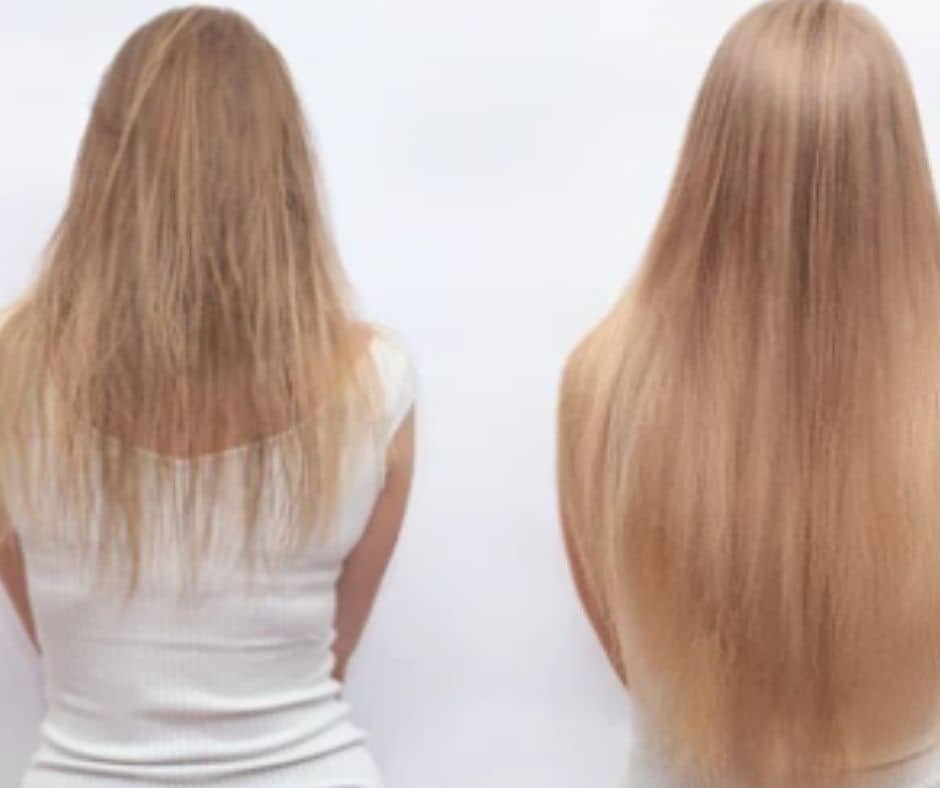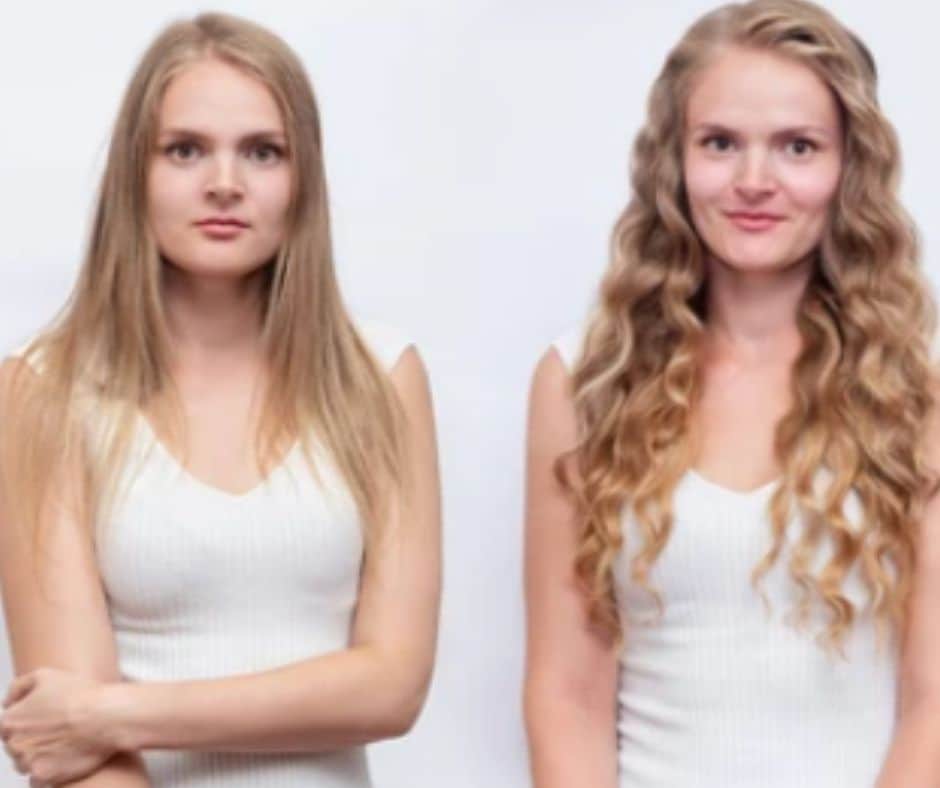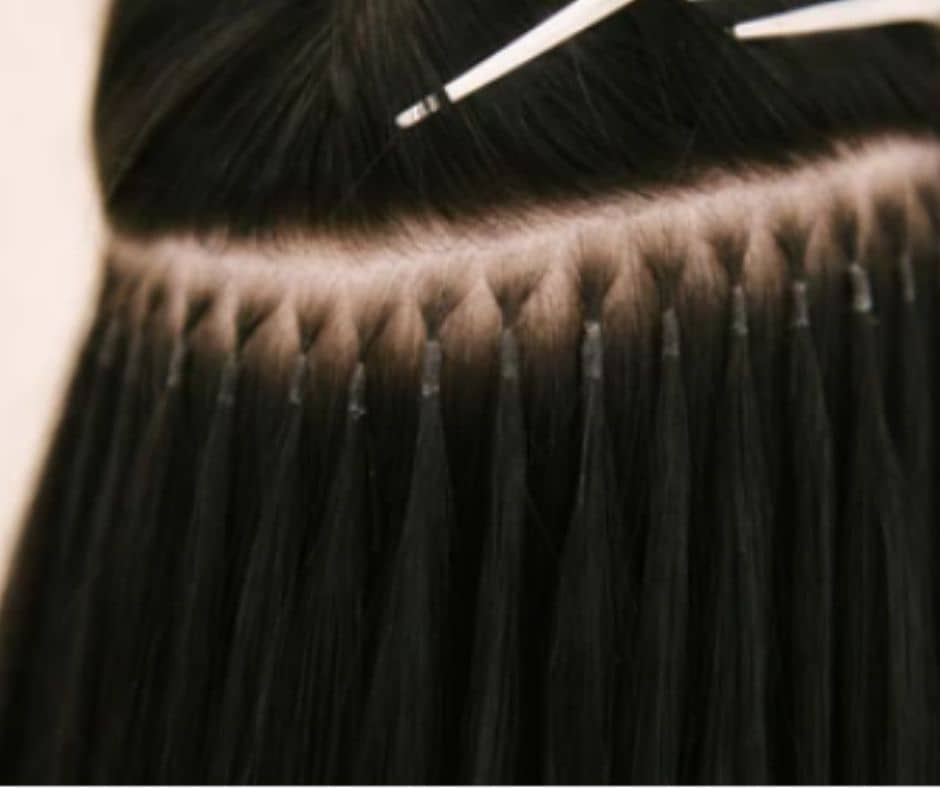Best hair extensions for fine hair

Extensions may offer you the volume and length you’ve always wanted for a natural and stunning appearance, and they’re a perfect option for fine or thin hair. But What are the Best hair extensions for fine hair?
Hair extensions will surely help you reach your ideal hair if you’ve been dreaming about long, flowing locks!
Everyone desires thick hair, but not everyone can get it. People with fine or thin hair are often seeking to find out how to make their hair seem thicker and more vibrant. Fortunately, we can now use hair extensions to help us, so it’s not the end of the world. So, let’s browse over our list to see which hair extensions are best for fine hair.
If you have thin hair, it’s vital that you choose the right hair extensions. Choosing the wrong one might make things worse by causing hair loss and bald spots. Check out our list to see whether it can help you make the best option! Remember that, in addition to choosing the right kind of hair extensions, how you wear them is also important.
Best Hair Extensions For Thin Hair

Hair extensions have a bad name for causing damage when worn incorrectly, so if you have thin hair, you may be ready to fill it in. Hair extensions for thin hair, fortunately, may help you gain confidence and achieve your desired look. Understanding how different hair extensions work will help you make the best choice for your hair.
The greatest extensions for thin hair can vary depending on your hair’s condition and the style you want to attain. We’ll go through the various kinds of hair extensions and how to utilize them in the instructions below.
Hair extensions come in a range of styles, some of which are more destructive than others. Because thin hair is already delicate, it’s critical to choose extensions that won’t add to the stress on the hair shaft or follicle. Some of the finest hair extensions for thin hair include hand-tied, halo, and tape-in choices.
Hand-Tied Hair Extensions
A stylish joins beads to a row of a client’s natural hair with hand-tied extensions, which are comparable to beaded weft extensions. People who wish to add volume and length to their hair in a natural manner without putting too much pressure on their scalp or hair can try this procedure.
Hand-tied extensions last around 6 to 9 weeks before needing to be replaced. The time between checks, on the other hand, is decided by how rapidly your hair grows and how well you care for it. The hair extensions themselves alone should last six to 12 weeks if properly cared for, and they can generally be reused.
You’ll like to ensure you schedule monthly maintenance visits to ease the stress on the scalp. We advise detangling, washing, and moisturizing your own hair even if you’re wearing hand-tied hair extensions.
Hair Extensions Halo
Hair extensions aren’t for everyone, and not everyone wants them stitched or glued into their hair.
Halo hair extensions are a quick, inexpensive, and temporary way to add length and thickness to your hair. They are made up of a single component with an adjustable, very undetectable wire connecting to the extensions.
Tape-In Hair Extensions
Tape-in hair extensions are a more recent technology that is ideal for individuals who have thin or fine hair. The tape extensions are 1.5 inches broad wefts and put row by row to your natural hair with tape. The tape wefts are thin and light, and they do not cause any harm.
This kind of hair extension for thin hair has the benefit of being applied in a single step. Instead of gluing two tape weft hair extensions together like a traditional tape application, one tape weft hair extension is applied to the hair and the other side is secured with a single-sided piece of tape.
Hair Extensions To Think Twice About
If you have fine hair, you’re surely aware that it’s more prone to breaking and requires special attention. When it comes to extensions, choose the gentlest alternative available, the ones that cause the least amount of damage. If you have fine hair, choose the smallest/flattest extensions possible with the least weight, since heavier extensions may readily be seen through thin hair.
Clip-In Hair Extensions

Clip-in hair extensions are a quick and simple solution to add length and volume to your hair, and they don’t need a salon visit (usually).
Clip-in hair extensions are less priced, simpler to use, and don’t need any upkeep. Clip-in hair extensions are perfect for a variety of special occasions, including parties, weddings, and other events. Clip-in hair extensions, on the other hand, aren’t meant to be used every day or to create spectacular hairstyles.
Women who opt to use clip-in hair extensions on a daily basis will face one major issue: bald patches! Because clips are put at the back of your head, where you cannot see the harm being done, you may not detect the breaking and onset of balding.
What causes bald patches, and how do they do it? Wefts for clip-in hair extensions are thicker and put a lot of pressure on your hair, tugging it and causing it to get stretched over time. Do you want to add a ponytail and some style with your clips? You’re putting your hair through even more stress and harm.
Many hairstylists are beginning to recognize the underlying dangers of clip-in hair extensions, as well as the harm they do to their customers. Clip-in hair extensions particularly set weighing more than 180 grams, should not be used on a regular basis since they can destroy your hair!
The clip-in extensions’ weight is too great, and it will pull hair out one by one, ultimately creating gaps and bald places. Clip-in hair extensions should not be used on a daily basis. If you have fine hair, clip-in extensions should be avoided since the clips may cause breakage and are easily apparent through fine hair.
Micro links Extensions
Micro links are a kind of hair extension that is attached to the hair strands using a small silicone bead. Based on how they’re being cared for and managed, the extensions could last between 8 to 10 weeks. The whole procedure is simple, and the ultimate result might be a more healthy extension. These extensions work best with medium to fine hair textures. Because the bead is so little, it gets lost or tangled quickly in thick or dense hair.
Micro links are ideal for healthy hair that is more than three inches long since they are so lightweight. It’s advised that you first have healthy hair since the increased weight and strain of the beads might weaken pre-existing damaged hair.
Fusion Hair Extensions
Fusion hair extensions, often known as ‘Pre-bonded hair extensions,’ are the most popular hair extensions among celebrities. It is one of the oldest methods, as well as one of the most advanced and evolved.
What is the procedure for applying fusion hair extensions to a person’s hair? A heat gun is used to apply this sort of hair extension to a person’s hair. In a nutshell, fusion hair extensions are a collection of individual hair strands with glue pre-installed at the end of each one.
Heating glue to melt it and blend it with your own hair is required for pre-bonded hair extensions. Your hair might be harmed if the hairdresser makes a mistake with the heat gun or makes any other mistakes. If not properly managed, they may potentially cause hair damage.
This is one of the reasons why many people choose non-fusion hair extensions over fusion hair extensions. We highly advise you to avoid having fusion hair extensions placed by someone who isn’t qualified in the field.
If you’re working with a hairdresser who doesn’t have a certification in pre-bonded extension installation, make sure they have a lot of expertise doing so and give a warranty or free touch-ups.
It might be a complete nightmare if fusion hair extensions are installed poorly! Imagine your hair is covered in melting glue.
Furthermore, the installation of fusion hair extensions takes a lengthy time. In contrast to tape-in extensions, which can be fitted in less than an hour, fusion hair extensions may take up to 6 hours to finish!
Hair Extensions Sewn-In

Sew-in hair extensions are not recommended for thin hair. If you have thin hair, the extensions may weigh it down since they must be stitched in after the hair is braided at the roots. If your hair is thin, they have the potential to inflict serious damage. As a consequence, if your hair is thin, you might think about investing in various hair extensions. You don’t want you’re fine hair to get damaged and fall out, after all.
If the hair extensions are stitched in too firmly, they may cause irritation and, in rare cases, headaches. As a consequence, the person who installs the hair extensions must have a great deal of experience. This way, you won’t have to deal with such issues.
Sew-in hair extensions might be difficult to wash and clean. Because your natural hair is braided while the extensions are on, a lot of bacteria and product build-up may accumulate in the braids, causing a lot of discomfort and possibly hair loss. As a consequence, you’ll need to wash your hair often and for long, enough for the shampoo to penetrate the braid and reach the scalp, eliminating any dirt or product build-up.
If the problems exceed the benefits, you should go for hair extensions that are more suited to your hair type and preferences.
What to Think About When Choosing Hair Extensions
When deciding between several extensions, there are many factors to consider, including cost, discomfort level, and length. Consider the following factors when determining which extension is best for you:
-Is it simple to keep up with?
-How much does it cost?
Does it make a difference to you, or does it not?
-Do they cause damage to your natural hair when they’re removed or installed? If that’s the case, you should try an alternative approach.
Additional note: Natural hair may be affected depending on how frequently and for how long your extensions are applied; if you just require extensions for a short time, sewing them in may not be the best choice since they are tough and time-consuming to uninstall.
How do you hide extensions in thin hair?
- Keep them simple and stylish.
Shorter extensions (16-22 inches) tend to seem more natural than super-long hair. Although you may feel tempted to apply for a 30-inch extension, it is always best to base the length of your extensions on the length of your natural hair!
- Trimming
Trimming your extensions to match your existing cut is an important component for effectively hiding them into your natural hair. Because most extensions have blunt ends, we recommend taking your extensions to your hairdresser and asking for a dry cut.
- Take out the curling irons.
If merging your shorter hair with your new extensions is proving difficult, try lightly waving the hair together.
We have a beautiful style we like to refer to as ‘the twist.’ This conceals the shorter ends of your hair around the nape of the neck, allowing your natural hair to shine through. Simply separate your hair at the nape of your neck from one side to the other, twist it, and bind it against your head with a bobby pin. Then you can simply clip the wefts onto the ‘the twist,’ and your shorter, thin hair will be covered while your long, voluminous hair will be on display for everyone to see.
- Brush well and spray
Put on hairspray and brush your normal hair over the extensions as you style it when you wish to wear your hair up and hide your additions. If your clip-ins still show through, try placing them upside down against your roots so they face the proper way.
Are Extensions Harmful to Fine Hair?
Let’s get right to it: hair extensions should not cause harm to your hair. Hair extensions are typically fairly safe when worn correctly and placed by a qualified hairdresser.
Fusion hair extensions are the sort of hair extensions that might harm your hair if put poorly or on the wrong type of hair. Because fusion hair extensions, also known as pre-bonded extensions, are applied to your hair by melting glue with a specific heated tool, you risk damaging your hair if they are not applied properly or if your hair is already too weak and damaged to withstand this kind of application.
In brief, hair extensions, including fusion hair extensions, do not harm hair. However, if the installation is done poorly, your hair may be damaged. So, what are your options? The best alternative is to use hair extensions that won’t harm your hair, such as temporary clip-in hair extensions. This will give you peace of mind.
What is the hair objective for those with thin or fine hair?
1. Make sure your natural hair is in excellent condition.
Before getting a weave or extensions, it’s crucial to take care of your natural hair. Ensure that your hair is clean and clear of product buildup, such as hairspray. Keep your hair nourished and strong by using conditioner. To maintain your hair healthy, continue to follow this hair care regimen when wearing a weave or extensions.
2. Seek the advice of a competent stylist.
You should get a professional to weave or add extensions to your hair. Pay attention while they’re working; if the hairdo causes you discomfort or a headache, it’s too tight. Tight hairstyles may lead to traction alopecia, which is a kind of irreversible hair loss caused by repetitive tugging on the hair. Ask your hairdresser to adjust the afflicted region if the hairdo aches or seems too tight.
3. Maintain a neat hairdo.
Wash your hair as regularly as your hair type requires. Remove clip-in extensions before washing your natural hair if you’re wearing them. To keep your scalp clean and nourished, use a moderate, moisturizing shampoo and conditioner.
4. Protect your edges.
Your hairline’s fragile newborn hairs are exceedingly sensitive. On this delicate hair, only use water-based styling gels and hydrate it with conditioner. Prevent using hot curling products as much as practicable.
5. Make a change in your hairdo.
Giving your hair a vacation from a weave or extensions is essential for maintaining healthy hair. Wear these styles for no more than two or three months before transitioning to a hairdo that doesn’t include them.
Which hair extension is the least damaging?
Because the wefts are broad, tape-in hair extensions lie flatter than other forms of extensions, making them the least obvious in hair. Unlike the bonds or the beads, it doesn’t give you spaghetti hair or make you feel uncomfortable against the pillow when sleeping. You may also use the tape-in to effortlessly tie your hair into a ponytail or bun.
This is the most effective extension for thinning hair. It lasts for a long time without causing harm to thin hair. Extensions that are taped in do not need any equipment or chemicals. Other providers need an additional adhesive or flat iron, but Glam Seamless Hair does not. That is what causes long-term damage to your hair.
